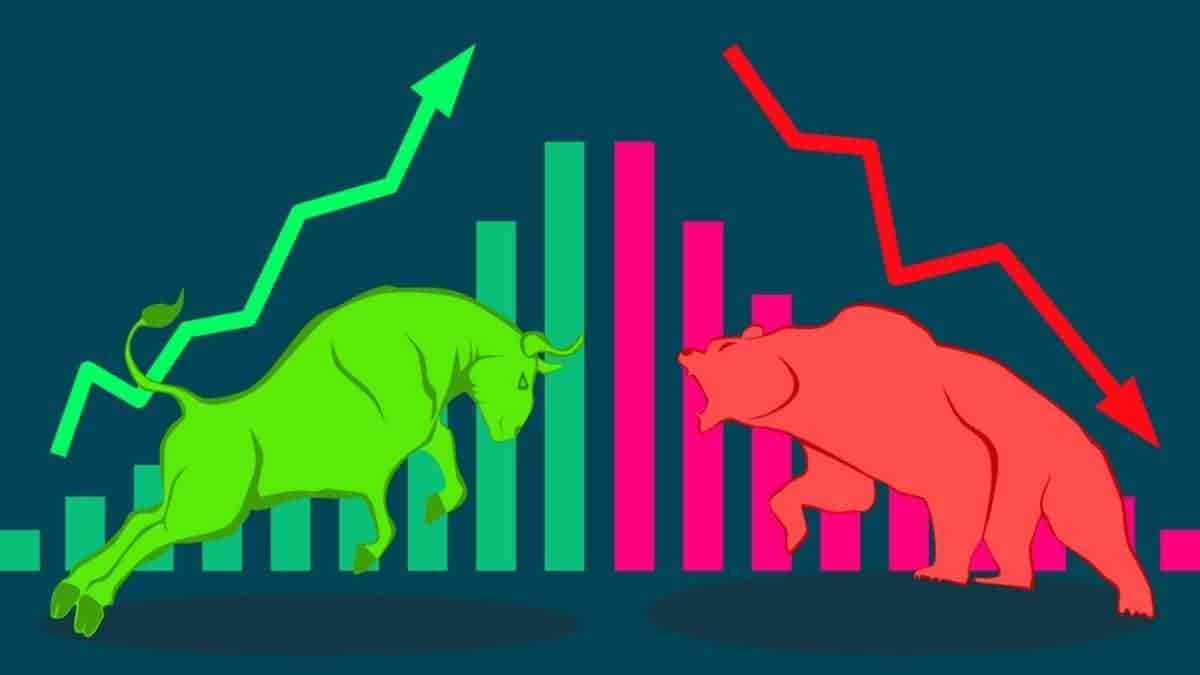Bull V. Bear Market- their significance in Stock Market?
For the long-run growth in money in the stock market, it’s important to know about the Bull and the Bear Markets. What do they signify and how you must invest, accordingly?

For the long-run growth in money in the stock market, it’s important to know about the Bull V. Bear Markets. What do they signify and how you must invest in Stock Market, accordingly.
The terms “Bull” and “Bear” are frequently used to refer to market mood. The terms describe how stock markets are going—that is, whether they are appreciating or depreciating in value. And being an investor, the mood of the stock market is a vital criterion that will be impacting your financial portfolio. So, it becomes necessary to know how each of these market conditions may impact your investments.
If the Stock market is a coin, then the Bull and Bear market are the two opposite sides of it. Commonly, bull and bear market phases are defined as – when the stock price is up by 20% or more from its recent low or 52-week low, it is said to have entered a ‘Bull market phase’. On the other side, as and when a stock declines by 20% or more from its recent peak or 52-week high, it is said to have entered a ‘Bear market phase’.
Can we call every 20% rise or fall be categorized as a Bull or Bear phase?
NO! Because the stock market is a volatile market. Volatile means the market experiences significant price changes, in a timely manner. A 20% fall after a sharp rally can be termed a market correction. And, a 20% rise after a steep fall can be called a pull-back rally. The stock market rally is simply presented -as a sharp, often-intense increase in stock prices.
So, how Bull and Bear market can be categorized?
The Bull Market phase is said- when the 50-day moving average of the stock or index crosses the 200-day moving average. This is known as the Golden Cross in market technicals.
The Bear Market phase is said- when the 50-day moving average of the stock or index falls below the 200-day moving average. This is known as the Death Cross.
How Economy affects the Bull and the Bear Market?
Stock Trading in the exchanges affects the economy, as businesses are part of the greater economy.
The Bear Market phase is associated with a weak economy. Because consumers are not able to spend well results in the downfall of businesses. This downfall in profit affects stock market value.
The Bull Market experiences opposite i.e. associated with a strong economy. As consumers spend well as they have enough money, the businesses witness higher profits. And thus Bull Market drives a strong economy.
What should be your step in Bull Market and Bear Market?
It’s direct – During the Bull Market, you must look for buying opportunities every moment. As an investor, you must take advantage of rising prices and buy stocks early as possible, and when the value reached a peak then sell them.
And during a Bear Market, you must look for selling opportunities on a rise. As in the Bear market chances of losses is greater. According to data, the Bull Market phase lasts longer as compared to the Bear Market phase. As per reports analyzed over years, the Bull market phase average length recorded is 2.7 years whereas the Bear market lasts less than 10 months.


